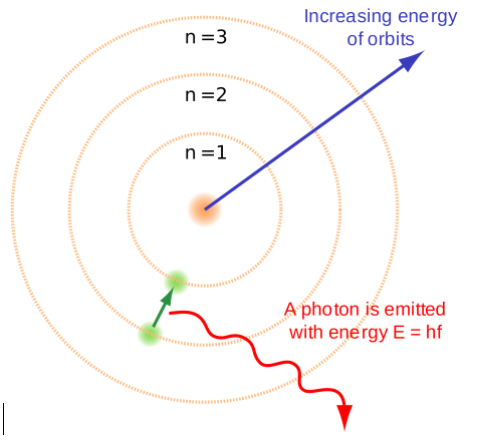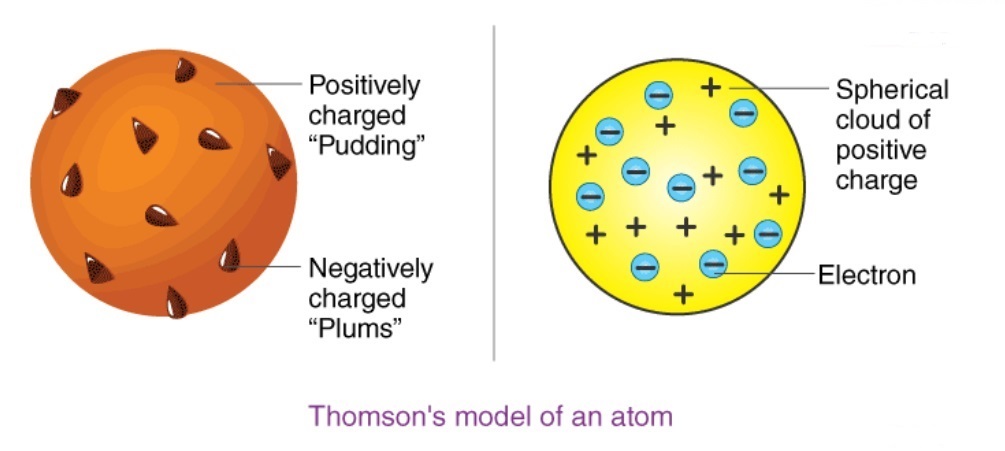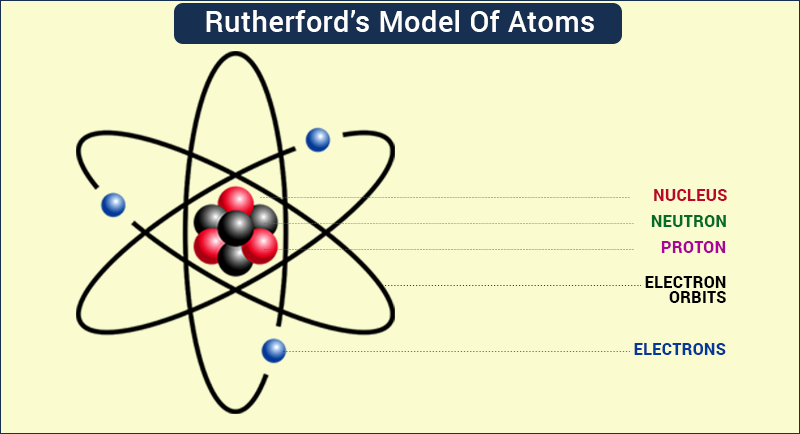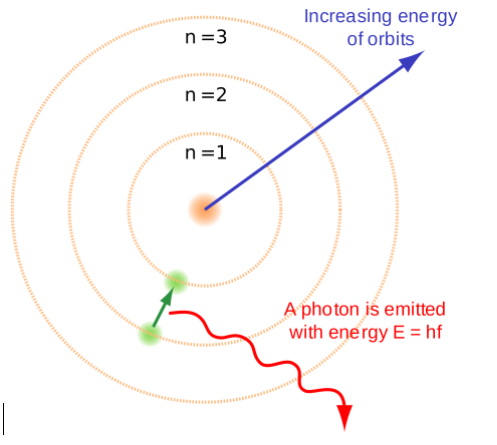Need help? We're here to assist you!
Thank You for Enquiry, we will contact you soon!
Close
The Class 9 is an important year in a student’s life and Science is one of the subjects that require dedication, hard work, and practice. It’s a subject where you can score well if you are well-versed with the concepts, remember the important formulas and solving methods, and have done an ample amount of practice. Worry not! Home Revise is here to make your Class 9 journey even easier. It’s essential for students to have the right study material and notes to prepare for their board examinations, and through Home Revise, you can cover all the fundamental topics in the subject and the complete NCERT Class 9 Science Book syllabus.

1. What are the canal rays?
Solution:
The radiations that are positively charged are canal rays. This discovery was crucial in the discovery of another subatomic particle that was positively charged – the proton.
2. If an atom contains one electron and one proton, will it carry any charge or not?
Solution:
Since a proton is a positively charged particle and an electron is a negatively charged particle, the net charge becomes neutral as both particles neutralise each other.
1. On the basis of Thompson’s model of an atom, explain how the atom is neutral as a whole.
Solution:
As per Thompson’s model of an atom,
(i) An atom contains a positively charged sphere in which the negatively charged electrons are implanted.
(ii) Electrons and protons are equal in magnitude; hence, an atom, on the whole, is electrically neutral.
2. On the basis of Rutherford’s model of an atom, which subatomic particle is present in the nucleus of an atom?
Solution:
As per Rutherford’s model of an atom, the positively charged protons are the ones that are present in the atom.
3. Draw a sketch of Bohr’s model of an atom with three shells.
Solution:

4. What do you think would be the observation if the ∝– particle scattering experiment is carried out using a foil of a metal other than gold?
Solution:
In the ∝ – particle scattering experiment, when any other metal foil is used instead of gold, the observation would remain the same. This is because the structure of an atom, when considered individually, remains the same.
1. Name the three subatomic particles of an atom.
Solution:
An atom consists of three subatomic particles:
2. Helium atom has an atomic mass of 4 u and two protons in its nucleus. How many neutrons does it have?
Solution:
Given: Atomic mass of helium atom = 4u, 2 protons in helium nucleus
Atomic mass = number of protons + number of neutrons
4 = 2 + number of neutrons
Number of neutrons = 4 – 2 = 2
Hence, Helium has 2 neutrons.
1. Write the distribution of electrons in Carbon and Sodium atoms.
Solution:
A carbon atom contains a total of 6 electrons. The following equation describes the electron distribution in a carbon atom: first orbit or K-shell = 2 electrons; second orbit or K-shell = 2 electrons; third orbit or K-shell = 2 electrons; fourth orbit or K-shell
L-shell or second orbit = 4 electrons
We can also express the electron distribution in a carbon atom as 2, 4.
In a sodium atom, there are 11 total electrons. The electron distribution in the sodium atom is described by: first orbit or K-shell = 2 electrons; second orbit or K-shell = 2 electrons; third orbit or K-shell = 2 electrons; fourth orbit or K-shell = 2
L-shell or second orbit = 8 electrons
M-shell or third orbit = 1 electron
Alternatively, we can express the electron distribution in a sodium atom as 2, 8, 1.
2. If the K and L shells of an atom are full, then what would be the total number of electrons in the atom?
Solution:
K shell can hold 2 electrons.
L shell can hold 8 electrons.
Hence, when both the shells are full, the total number of electrons present in the atom = 2+8 = 10 electrons.
1. How will you find the valency of chlorine, sulphur and magnesium?
Solution:
We know that an element’s valency refers to its proclivity for accepting or losing electrons in order to complete its octet and achieve a stable electronic state.
It is the smallest number of electrons that must be added or removed to entirely occupy an element’s outermost shell.
Mathematically, if an atom’s outermost shell contains 4 or fewer electrons, the element’s valency is equal to the number of electrons present in the outermost shell; if it contains more than 4, the valency is determined by subtracting the total number of electrons present in the outermost shell from 8.
Calculation of valency:
Valency of chlorine:
The electronic configuration of chlorine = 2, 8, 7
Chlorine has 7 (more than 4) electrons in its outermost shell.
Therefore, the valency of chlorine = 8 – the number of electrons in the outermost shell
= 8−7
= 1
Valency of Sulphur:
The electronic configuration of Sulphur = 2, 8,6
Sulphur has 6 (more than 4) electrons in its outermost shell.
Therefore, the valency of chlorine = 8 – the number of electrons in the outermost shell
= 8−6
= 2
Valency of magnesium:
The electronic configuration of Magnesium = 2, 8, 2
Magnesium has 2 (less than 4) electrons in its outermost shell.
Therefore, the valency of magnesium= Number of electrons in its outermost shell
= 2
1. If the number of electrons in an atom is 8 and the number of protons is also 8, then
(i) What is the atomic number of the atom? and
(ii) What is the charge on the atom?
Solution:
Given: Number of electrons = 8
Number of protons = 8
(i) The atomic number of an atom is the same as the number of protons in that atom; hence, its atomic number is 8.
(ii) In an atom, the number of protons is equal to the number of electrons. Hence, both the charges – positive and negative – neutralise each other. Therefore, the atom does not possess any charge.
2. With the help of the given table, find out the mass number of oxygen and sulphur atom.
Table: Composition of Atoms of the First Eighteen Elements with Electron Distribution in Various Shells.
| Name of Element | Symbol | Atomic number | Number of Protons | Number of Neutrons | Number of electrons |
Distribution of electrons
K L M N |
Valency | |||
|
Hydrogen
Helium Lithium Beryllium Boron Carbon Nitrogen Oxygen Fluorine Neon Sodium Magnesium |
H
He Li Be B C N O F Ne Na Mg |
1
2 3 4 5 6 7 8 9 10 11 12 |
1
2 3 4 5 6 7 8 9 10 11 12 |
–
2 4 5 6 6 7 8 10 10 12 12 |
1
2 3 4 5 6 7 8 9 10 11 12 |
1
2 2 2 2 2 2 2 2 2 2 2 |
–
– 1 2 3 4 5 6 7 8 8 8 |
–
– – – – – – – – – 1 2 |
–
– – – – – – – – — – – |
1
0 1 2 3 4 3 2 1 0 1 2 |
|
Aluminium
Silicon Phosphorus Sulphur Chlorine Argon |
Al
Si P S Cl Ar |
13
14 15 16 17 18 |
13
14 15 16 17 18 |
14
14 16 16 18 22 |
13
14 15 16 17 18 |
2
2 2 2 2 2 |
8
8 8 8 8 8 |
3
4 5 6 7 8 |
–
– – – – |
3
4 3,5 2 1 0 |
Solution:
(a) To find the mass number of Oxygen,
Number of protons = 8
Number of neutrons = 8
Atomic number = 8
Atomic mass number = Number of protons + number of neutrons = 8 + 8 = 16
Therefore, the mass number of oxygen = 16
(b) To find the mass number of Sulphur,
Number of protons = 16
Number of neutrons = 16
Atomic number = 16
Atomic mass number = Number of protons + number of neutrons = 16 + 16 = 32
1. For the symbols H, D and T, tabulate three subatomic particles found in each of them.
Solution:
The following table depicts the subatomic particles in Hydrogen (H), Deuterium (D), and Tritium(T).
| Isotope | Symbol | Mass no. | Atomic no. | No. of electrons | No. of protons | No. of neutrons |
| Hydrogen | H | 1 | 1 | 1 | 1 | 0 |
| Deuterium | D | 2 | 1 | 1 | 1 | 1 |
| Tritium | T | 3 | 1 | 1 | 1 | 2 |
2. Write the electronic configuration of any one pair of isotopes and isobar.
Solution:
(a) Isotopes: Isotopes are atoms which have the same number of protons, but the number of neutrons differs. This leads to the variation in mass number too.
Example: Carbon molecule exists as 6 C12 and 6 C14 , but when their electronic configuration is noticed, both have K-2; L-4
(b) Isobars: Isobars are atoms which have the same mass number but differ in atomic number. The electronic configuration of an isobar pair is as follows:
Example: Electronic configuration of 20 Ca40 – K-2; L-8; M-8; N- 2
Electronic configuration of 18 Ar40 – K-2; L-8; M-8
Exercise Page: 54
1. Compare the properties of electrons, protons and neutrons.
Solution:
| Property | Electrons | Protons | Neutrons |
| Charge | Negatively charged | Positively charged | No charge. |
| Location | Located outside the nucleus | Located within the nucleus | Located inside the nucleus of an atom |
| Weight | Mass is negligible | 1 a.m.u | 1 a.m.u |
| Affinity | Attracted towards positively charged | Attracted towards negatively charged | Do not get attracted to any charged particle |
2. What are the limitations of J.J.Thomson’s model of the atom?
Solution:
The following are the limitations of J.J. Thomson’s model of an atom:
3. What are the limitations of Rutherford’s model of the atom?
Solution:
The following are the limitations of Rutherford’s model of the atom:
4. Describe Bohr’s model of the atom.
Solution:

5. Compare all the proposed models of an atom given in this chapter.
Solution:
| Thomson | Rutherford | Bohr |
|
● Sphere is positively charged.
● Electrons are negatively charged and scattered all through the inside of the sphere. ● Positively charged = negatively charged ● The net charge in the atom is zero. |
● The nucleus is at the centre and is positively charged, holding the entire mass.
● Electrons are negatively charged, revolving in a well-defined path ● In comparison with the nucleus, the size of the atom is very large. ● Force of attraction of the electrons towards the nucleus is balanced by centrifugal force acting away from it. As a result, electrons are not drawn close to the nucleus. |
● Nucleus is present at the centre and is positively charged
● Electrons are negatively charged, revolving around but do not radiate energy. ● The distinct orbits are labelled as K, L, M, and N |
6. Thomson’s Model of Atom.

7. Rutherford’s Model of Atoms.

8. Bohr’s model of the atom.

Summarise the rules for the writing of the distribution of electrons in various shells for the first eighteen elements.
Solution:
K shell – n=1 ; 2n2 = 2(1)2 = 2
L shell – n=2 ; 2n2 = 2(2)2 = 8
M shell – n=3 ; 2n2 = 2(3)2 = 18
N shell- n=4 ; 2n2 = 2(4)2 = 32
9. Define valency by taking examples of silicon and oxygen.
Solution:
The definite combining capacity of the atoms of each element, wherein electrons are lost, gained or shared to make the octet of electrons present in the outermost shell, is defined as valency. To measure valency, we can figure out the number of electrons that are required to complete the shell in which it is contained or losing excess electrons, if present, once the filling is complete.
Example: To find the valency of silicon,
The atomic number of silicon is 14.
The number of electrons is equal to the number of protons in silicon, i.e., 14.
The distribution of electrons in silicon atoms is K – 2, L – 8, M – 4
Hence, from the distribution of silicon, it is clearly evident that to fill the M shell, 4 electrons are required. Therefore, its valency is 8-4=4
To find the valency of oxygen,
The atomic number of oxygen is 8.
The number of electrons is equal to the number of protons in oxygen, i.e., 8.
The distribution of electrons in oxygen atom is K – 2, L – 6
Hence, from the distribution of oxygen, it is clearly evident that to fill the M shell, 6 more electrons are required. Therefore, its valency is 8-6=2
10. Explain with examples
(i) Atomic number,
(ii) Mass number,
(iii) Isotopes and
(iv) Isobars.
Give any two uses of isotopes.
Solution:
(i) The number of positively charged protons present in the nucleus of an atom is defined as the atomic number and is denoted by Z. Example: Hydrogen has one proton in its nucleus; hence, its atomic number is one.
(ii) The total number of protons and neutrons present in the nucleus of an atom is known as the mass number. It is denoted by A. 20 Ca40 . The mass number is 40. The atomic number is 20.
(iii) The atoms which have the same number of protons but a different number of neutrons are referred to as isotopes. Hence, the mass number varies.
Example: The most simple example is the Carbon molecule which exists as 6 C12 and 6 C14
(iv) Isobars: Isobars are atoms which have the same mass number but differ in atomic number.
Examples are, 20 Ca40 and 18 Ar40
Uses of isotopes
11. Na+ has completely filled K and L shells. Explain.
Solution:
The atomic number of sodium is 11. It has 11 electrons in its orbitals, wherein the number of protons is equal to the number of electrons. Hence, its electronic configuration is K-2 ; L-8 ; M-1 ; The one electron in the M shell is lost, and it obtains a positive charge since it has one more proton than electrons and obtains a positive charge, Na+ . The new electronic configuration is K-1; L-8, which is the filled state. Hence, it is very difficult to eliminate the electron from a filled state as it is very stable.
12. If the bromine atom is available in the form of, say, two isotopes 35 Br79 (49.7%) and 35 Br81 (50.3%), calculate the average atomic mass of the Bromine atom.
Solution:
The atomic mass of an element is the mass of one atom of that element. Average atomic mass takes into account the isotopic abundance.
Isotope of bromine with atomic mass 79 u = 49.7%
Therefore, Contribution of 35 Br79 to atomic mass = (79 × 49.7)/100
⇒ 39.26 u
Isotope of bromine with atomic mass 81 u = 50.3%
Contribution of 35 Br81 to the atomic mass of bromine = (81 × 50.3)/100
⇒ 40.64u
Hence, the average atomic mass of the bromine atom = 39.26 + 40.64 u = 79.9u
13. The average atomic mass of a sample of element X is 16.2 u. What are the percentages of isotopes 8 X16 and 8 X18 in the sample?
Solution:
Let the percentage of 8 X16 be ‘a’ and that of 8 X18 be ‘100-a’.
As per the given data,
16.2u = 16 a / 100 + 18 (100-a) /100
1620 = 16a + 1800 – 18a
1620 = 1800 – 2a
a = 90%
Hence, the percentage of the isotope in the sample 8 X16 is 90% and that of
8 X18 = 100-a = 100- 90=10%
14. If Z=3, what would be the valency of the element? Also, name the element.
Solution:
Given: Atomic number, Z = 3
The electronic configuration of the element = K-2; L-1, hence its valency = 1
The element with atomic number 3 is Lithium.
15. Composition of the nuclei of two atomic species, X and Y, are given as under
X Y
Protons = 6 6
Neutrons = 6 8
Give the mass numbers of X and Y. What is the relation between the two species?
Solution:
Mass number of X: Protons + neutrons = 6+6 = 12
Mass number of Y: Protons + neutrons = 6+8 = 14
They are the same element, and their atomic numbers are the same.
They are isotopes, as they differ in the number of neutrons and hence their mass numbers.
16. For the following statements, write T for true and F for false.
(a) J.J. Thomson proposed that the nucleus of an atom contains only nucleons.
(b) A neutron is formed by an electron and a proton combining together. Therefore, it is neutral.
(c) The mass of an electron is about 1/2000 times that of a proton.
(d) An isotope of iodine is used for making tincture iodine, which is used as a medicine.
Solution:
(a) The statement is False.
(b) The statement is False.
(c) The statement is True.
(d) The statement is False.
17. Put a tick(✓) against the correct choice and cross(x) against the wrong choice in questions 15, 16 and 17.
Rutherford’s alpha–particle scattering experiment was responsible for the discovery of
(a) Atomic nucleus
(b) Electron
(c) Proton
(d) Neutron
Solution:
(a) Atomic nucleus
Isotopes of an element have
(a) The same physical properties
(b) Different chemical properties
(c) Different number of neutrons
(d) Different atomic numbers
Solution:
(c) Different number of neutrons
18. Number of valence electrons in Cl– ion are
(a) 16
(b) 8
(c) 17
(d) 18
Solution:
(b) 8
The electronic distribution of Cl is K-2, L-8, M-7. Valence electrons are 7; hence, chlorine gains one electron for the formation of Cl– . Therefore, its valency is 8.
19. Which one of the following is a correct electronic configuration of Sodium?
(a) 2, 8
(b) 8, 2, 1
(c) 2, 1, 8
(d) 2, 8, 1
Solution:
(d) 2, 8, 1
Complete the following table.
| Atomic Number | Mass Number | Number of Neutrons | Number of Protons | Number of Electrons | Name of the Atomic Species |
|
9
16 – – – |
–
32 24 2 1 |
10
– – – 0 |
–
– 12 1 1 |
–
– – – 0 |
–
Sulphur – – – |
Solution:
The following table depicts the missing data:
Atomic number(Z) = Number of protons
Mass number = Number of neutrons + atomic number
(or)
Mass number(A) = Number of neutrons + number of neutrons
| Atomic Number | Mass Number | Number of Neutrons | Number of Protons | Number of Electrons | Name of the Atomic Species |
|
9
16 12 1 1 |
19
32 24 2 1 |
10
16 12 1 0 |
9
16 12 1 1 |
9
16 12 1 0 |
Fluorine
Sulphur Magnesium Deuterium Hydrogen |